He went down in history as the originator of a 30-year tyranny based on terror and a personality cult:the Georgian Josef Vissarionovich Dschugashvili, known as Stalin.
The red dictator is one of the worst criminals in human history. The "Great Terror", Stalin's deportations and forced resettlements as well as his gigantic system of penal camps brought death and suffering to millions of people in the countries of the former USSR and Eastern Europe.
Childhood full of violence
Josef Vissarionovich Dzhugashvili was born on December 18, 1878 (according to other sources on December 21, 1879) in the Georgian city of Gori, near the capital Tiflis.
Josef is an intelligent child who grows up in bleak circumstances. The siblings die early. The father, who set up his own small shoe factory, soon went bankrupt and had to work in Tbilisi from then on. The mother is a strictly religious woman who pushed her son into the priesthood at an early age. The family hardly has the necessities to live, the father drinks, the son often gets hit by both parents.
Stalin's childhood is marked by violence. The child learns to hate at an early age. His face is covered with smallpox scars and his left arm is crippled by an accident.
But at school, Josef shines with outstanding achievements. In addition, he has a bright voice, a beautiful tenor. He loved to sing well into old age and on many occasions.
His penchant for violence is soon noticed. Josef knows how to dominate, soon he is the leader of a criminal gang of thugs.
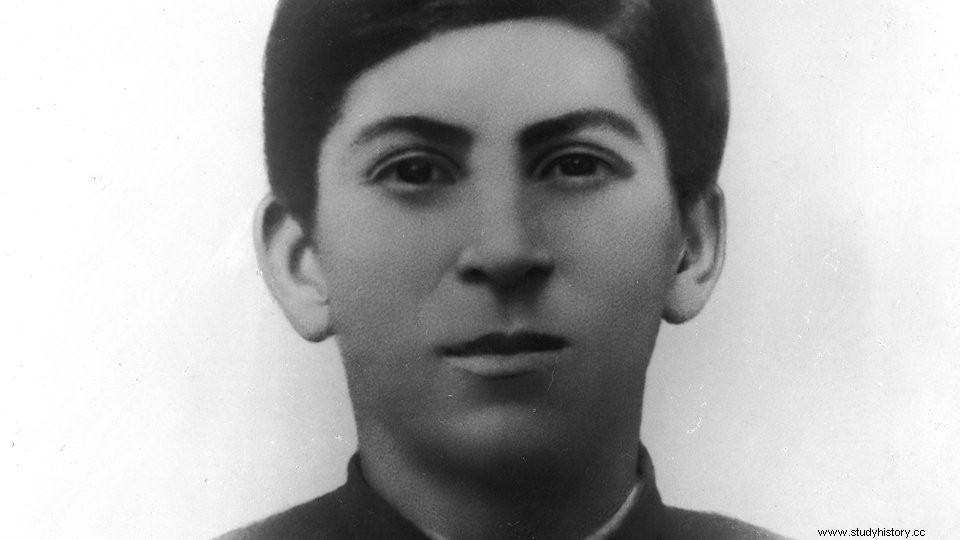
Joseph Stalin as a teenager in 1893
In the seminary
In 1894, against the will of his father, Josef entered the orthodox seminary in Tbilisi, at that time the most important educational institution in Georgia, as the best school leaver. But the seminary has a dubious reputation. The students are more oppressed than taught by the monks and teachers, the seminar is like a prison.
In addition to the classic education, Josef Dschugashwilli learns the fine and perfidious psychological mechanisms of oppression, self-assertion and harassment of competitors.
Stalin reads everything he can get his hands on. Darwin's groundbreaking work "On the Origin of Species" left a deep impression on him; he has long since turned into a convinced atheist. He soon comes into contact with forbidden literature that captures his attention:the classics of Marxism.
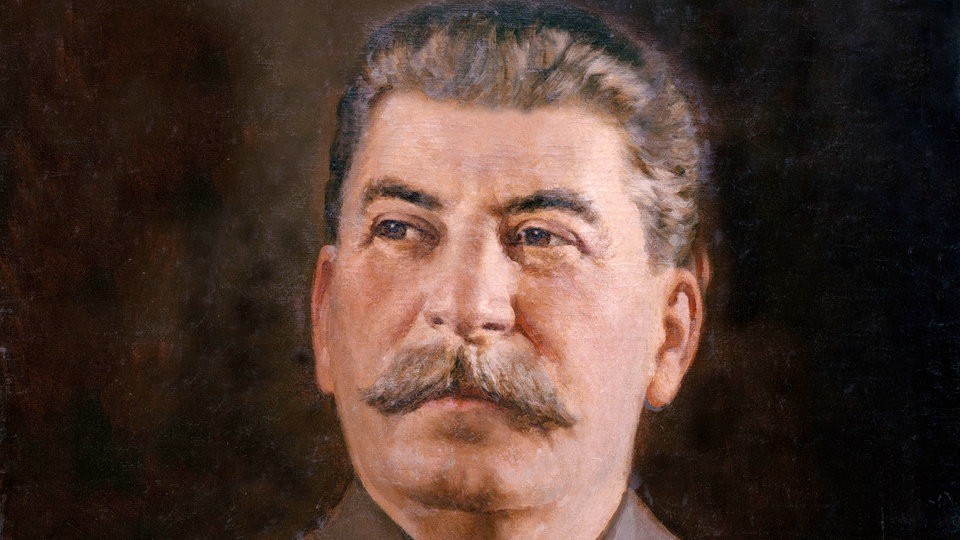
The Red Dictator
Life underground
In 1897, Dzhugashvili decided to become a professional revolutionary and join the subversive forces that wanted to overthrow tsardom. A year later he was expelled from the seminary for revolutionary activities.
He evades conscription and goes underground. The prospective professional politician will spend the next 20 years illegally. He becomes a member of the Caucasian section of the "Russian Social Democratic Labor Party". Dzhugashvili becomes a propagandist, he organizes strikes and demonstrations among railroad workers and oil workers, commits large-scale robberies and extorts protection money.
His life in the underground conspiracy is repeatedly interrupted by arrests and banishment to Siberia, from which he always returns immediately, since the penal measures imposed on him are only half-heartedly checked.
Stalin joins the Bolsheviks, the radical wing of professional revolutionaries under Lenin. In 1905 he met Lenin personally for the first time.

Photos from Stalin's file with the tsarist police
A man for the rough
In the revolutionary year 1917, the steep career of Josef W. Dschugashvilli began. He becomes a member of the party's central committee, rises to the Politburo and works on the editorial board of the party newspaper "Pravda".
Stalin - "the steel man", as he now calls himself - possesses numerous qualities that make him interesting for the Bolsheviks:He comes from the fringes of the empire, is an integrator, an Asian member of the Russian-Jewish milieu of the revolutionaries. Through him, the Bolsheviks can also penetrate the young Soviet state on its outskirts.
Stalin is a violent man with calluses on his hands, a presentable proletarian who is largely supported by the proletarians and the Asian cadres of the party. In the first Soviet government, Stalin took over the office of People's Commissar for Nationality Questions.
In 1922 he became general secretary of the "Communist Party of the Soviet Union" (CPSU) and the man at Lenin's side. Soon he is systematically shielding Lenin, who is severely handicapped by strokes, from political events. Lenin recognizes the danger emanating from Stalin's unscrupulousness:Shortly before his death he tries to remove the Georgian from his offices.
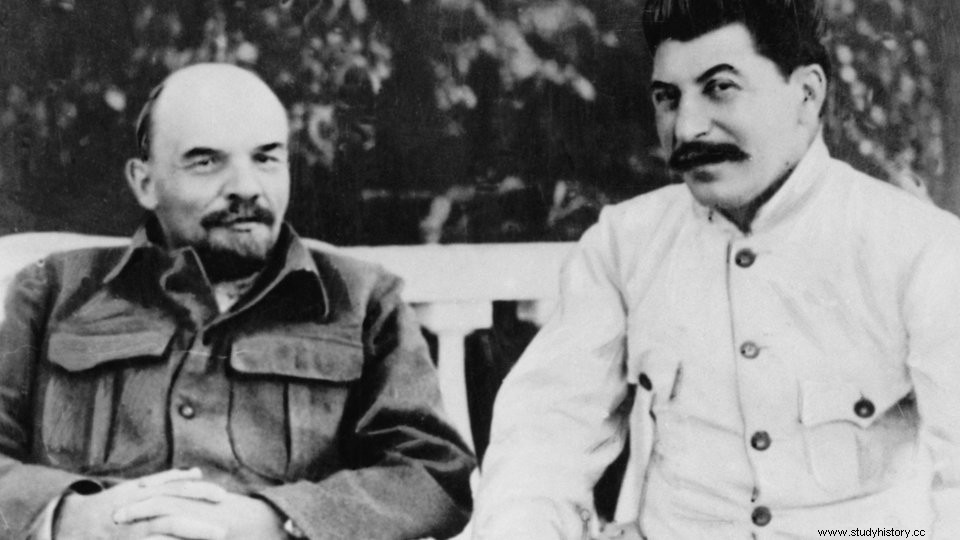
Lenin and Stalin in Gorky 1922
Lenin's will
In his will, a letter to the CPSU party congress in 1922/23, Lenin writes:"Comrade Stalin, having become General Secretary, has concentrated in his hands immeasurable power, and I am not convinced that he will always understand to use this power cautiously enough. [...] Stalin is too rude, and this lack, which is quite tolerable in our midst and in the dealings between us Communists, cannot be tolerated in the function of Secretary General."
Lenin continues:"Therefore, I propose to the comrades that they consider how to replace Stalin and put someone else in his place who in every respect differs from Comrade Stalin in only one virtue, namely that he more tolerant, loyal, polite and attentive to comrades, less capricious, etc. "
Lethal claim to power
But Stalin manages to suppress the will. After Lenin's death in 1924, he decided the power struggle in the party in his favor. First he eliminated his main opponent, Trotsky, whom he later had assassinated in exile in Mexico. Gradually he sacks every competitor in the heart of the power.
In the mid-1920s, Stalin ousted former comrades-in-arms of the old guard from office, then removed them from the party. Ten years later he purges almost the entire Bolshevik leadership.
After their assassination, Stalin has all memory of the disgraced comrades erased. Photos are destroyed and retouched, names are made unrecognizable, existences are denied. Stalin's victims should be erased from collective memory.
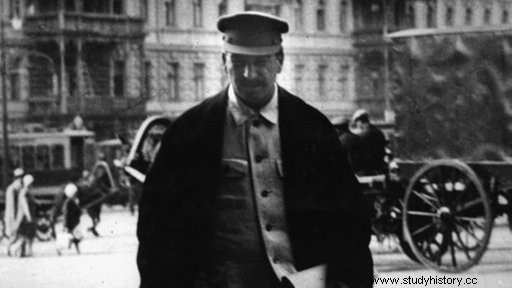
Stalin on the way to the Kremlin (1932)
The Red Dictator
After the relentless purge of the party, Stalin breaks the backbone of the Red Army. Countless executives are eliminated. He places docile successors in the place of the liquidated cadres.
The atrocities are not only aimed at the party, army and administration. Stalin terrorizes his own people, he wants to break his will. With an iron fist he carries out the forced collectivization of the peasants - the peasants have to give up their own farms and join large socialist farms. This causes severe famine on the Volga and in Ukraine. With the same contempt for humanity, he sent millions of poorly equipped Red Army soldiers to the front when Hitler invaded the Soviet Union in June 1941.
Until 1953, Stalin ruled the Soviet Union with ruthless severity, bringing death and ruin to the people. It is estimated that 20 million people died at the hands of Stalinism, including millions starving to death through forced collectivization, millions deported, millions dying in the gulags, millions executed in the Stalinist purges.
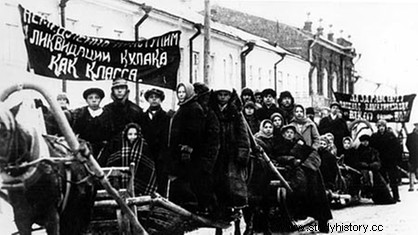
Mass deportation of kulaks 1929/30
Death by distance
Privately, the red dictator freezes into a gloomy monument that he created himself. He no longer shows himself to the people. Stalin lives a secluded life, no one can get close to him. Ultimately, the unbridgeable distance that he had created between himself and his closest subordinates cost him his life:when he suffered a stroke in his dacha near Moscow on March 5, 1953, no one dared to come into his room. Nobody wants to act or make decisions without their consent.
Instead of a doctor, the Politburo was notified. When the comrades arrive hours later, the dictator is dead.
